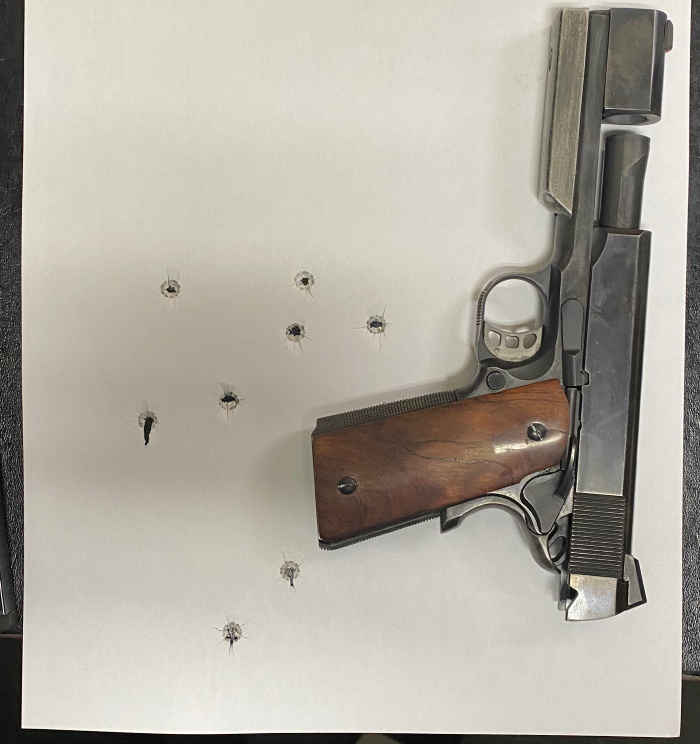I shot IPSC competition in the 1980s. We used techniques developed from those used in the 1970s, which were based on techniques used in the 1960s and so on. I’ve shot only a couple of matches since then, so I haven’t really kept up with developments, and suddenly it’s decades later. Meh, I’m old. No worries, what I know works well enough, I told myself. I don’t need to learn this new stuff.
Sure, Uh-huh. Thing is, it’s not always about need.
I was at the range with my newly-minted speed gun and tried a few things. Then I tried a few different things and that produced some interesting results. Doing double taps at seven yards it was apparent I could keep things in the A-zone on a target. That’s what the game requires so good enough, right?

OK, it bugs me. It’s sloppy and feels un-controlled. I decided to do some rapid-fire. Just to make sure we’re all on the same page here a double-tap is when you aim, then fire twice very fast. The second shot is not aimed. When I am speaking of rapid fire in this context I mean firing as fast as I can get a decent sight picture. This means two, maybe three shots a second. It’s a little slower, but the results were a lot better.
Time for an experiment. Two targets side by side, two shots each. Double-taps were BoomBoom-pause-BoomBoom. OK, that was pretty quick. Now rapid Fire, which went Boom Boom Boom Boom. Rapid-fire was actually noticeably faster. No, I wasn’t running a shot timer, but it was obvious.
I’m not sure why. A mental issue? A training issue? Lack of practice? Don’t know, but Rapid Fire was not just faster, it was seriously more precise. I backed some targets out to ten yards, where I can’t consistently keep double-taps in the A-zone and tried rapid fire over and over. Interesting. I was not shooting any slower than I had at five yards.
OK, so double-taps are not The Way. I’m maybe the last person on the planet to know this. yes, there will be some stages and targets where the split-seconds saved justify them, but as a rule? Rapid Fire.
I also noticed my front sight is too wide. I’m slower getting a sight picture because I have to insure it’s centered; it’s wide enough that this isn’t obvious. Time to narrow down the front sight a bit.
I also tried a different grip and stance. I learned a modified version of the Weaver Stance. If you’re too young you can Google it. These days a ‘thumbs-forward-isosceles’ seems to be the hot ticket. using my old grip my right thumb rides the safety and the other is clamped on top of it
I tried to grip the gun in a more modern fashion-
This genuinely felt better doing rapid-fire, so now I am going to over-write my old training and decades of habit to use the new grip. Yay. I have found the the axis of the slide release makes a nice, natural place for my thumb and does not prevent it from working, so I am going to go with that.
So, to be hopelessly cliché, it’s time for the old dog to learn some new tricks. Yippee. Hope you all stay safe and take care.
Michael Tinker Pearce, 20 January 2022.